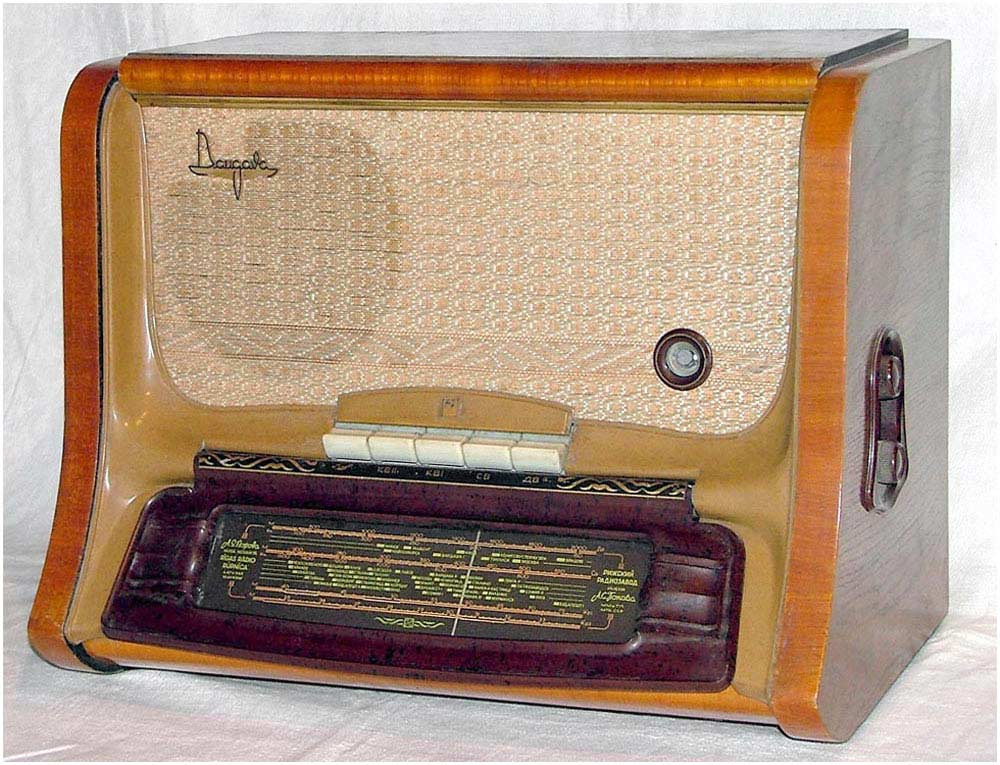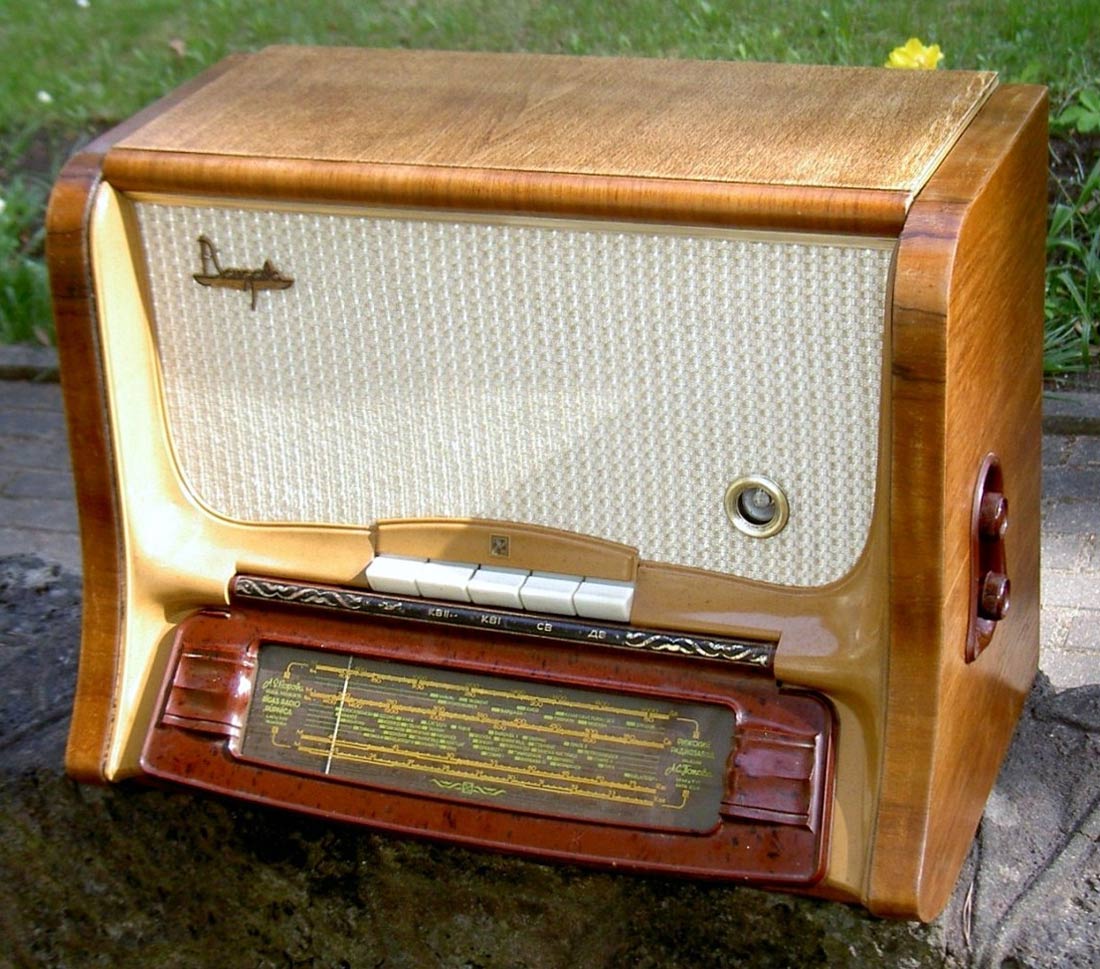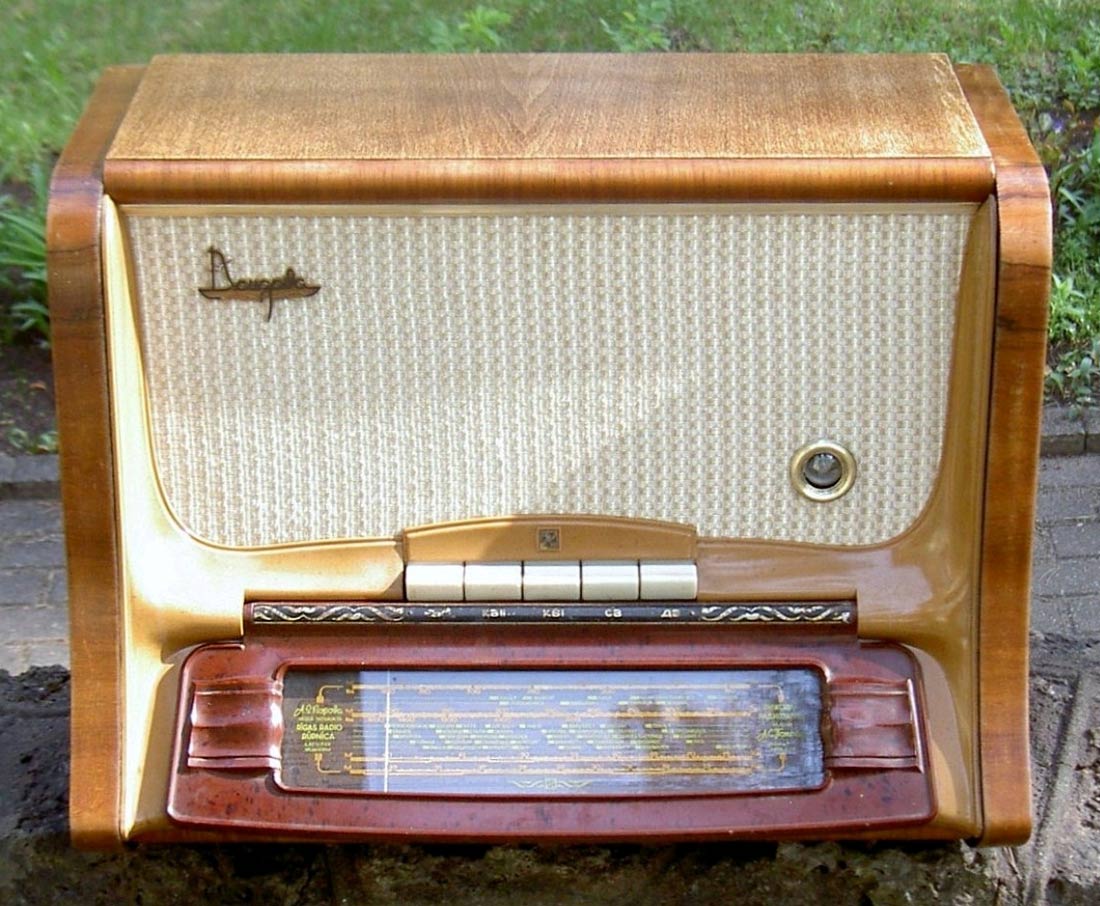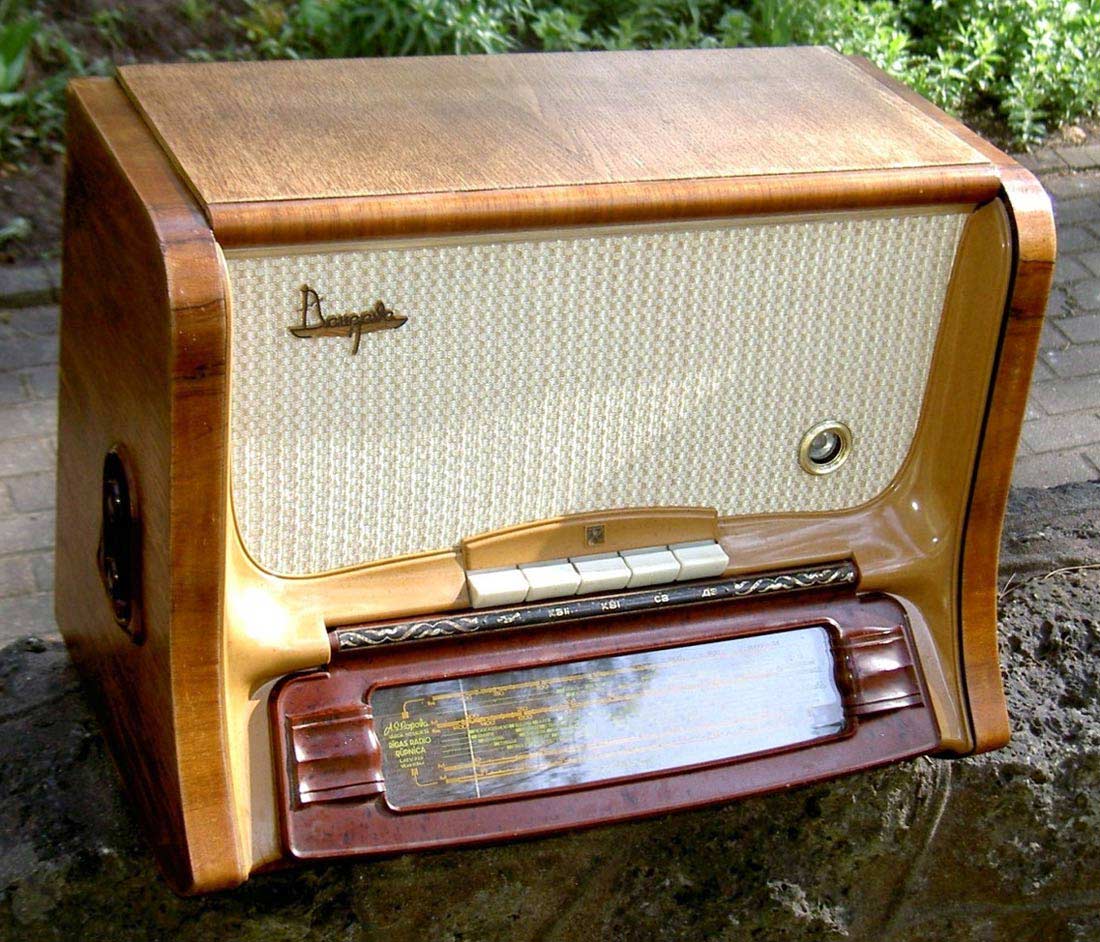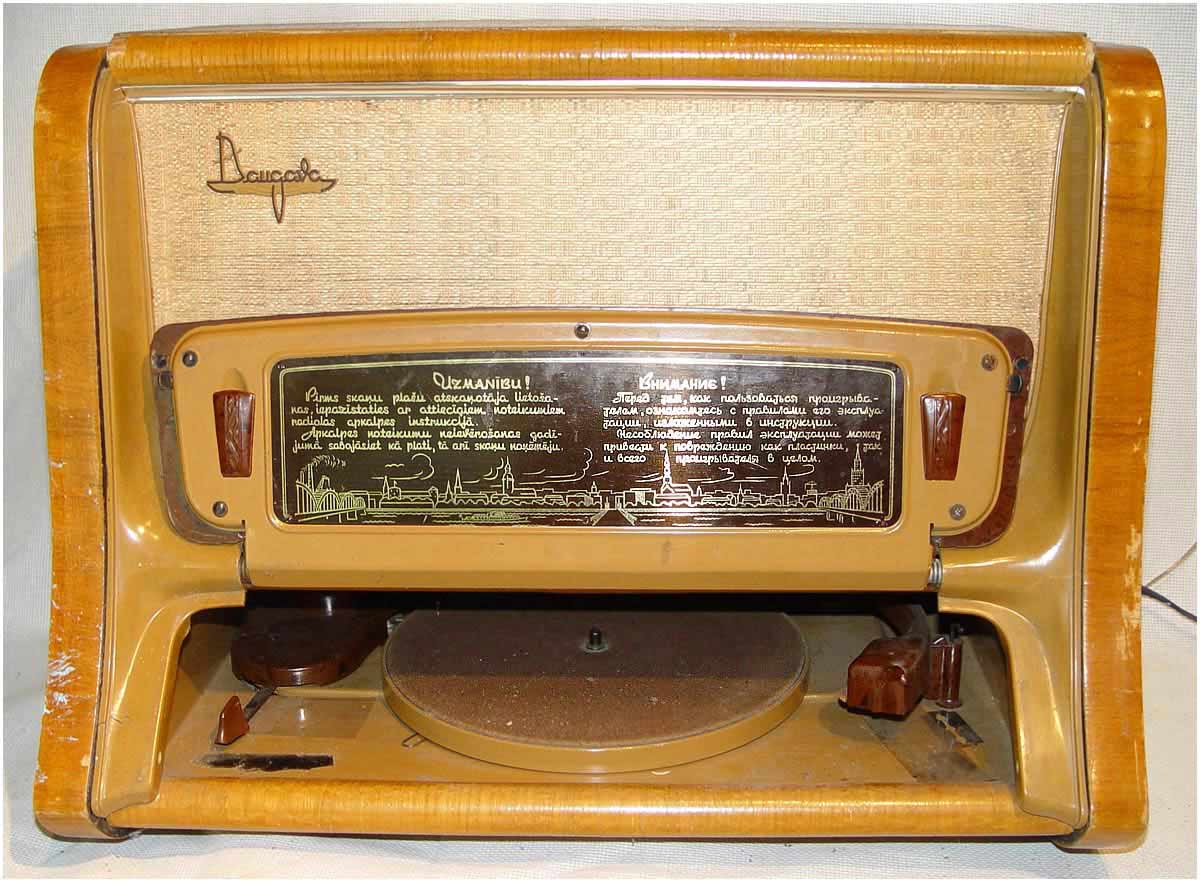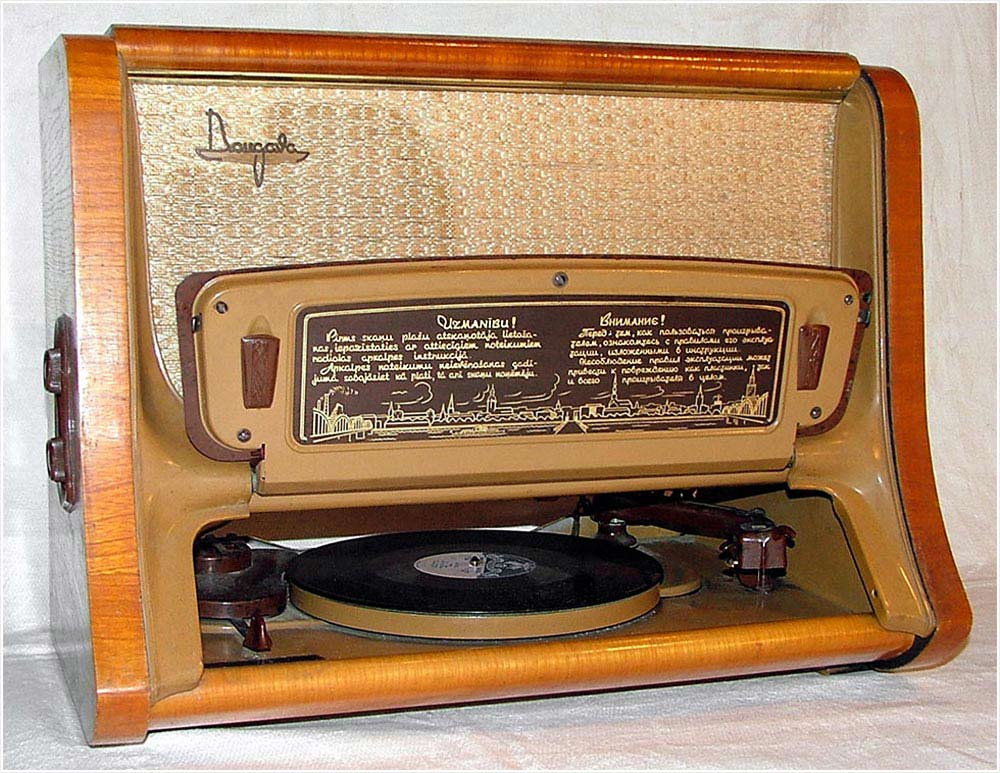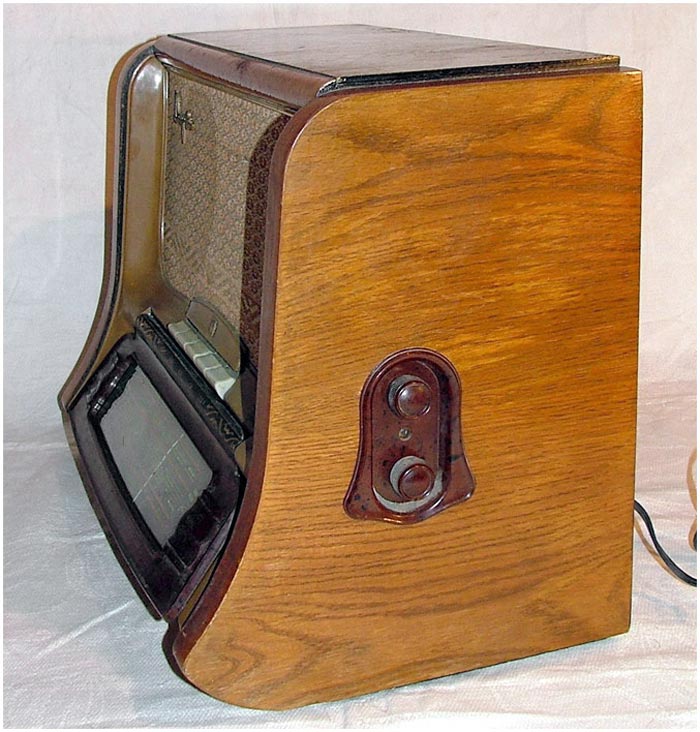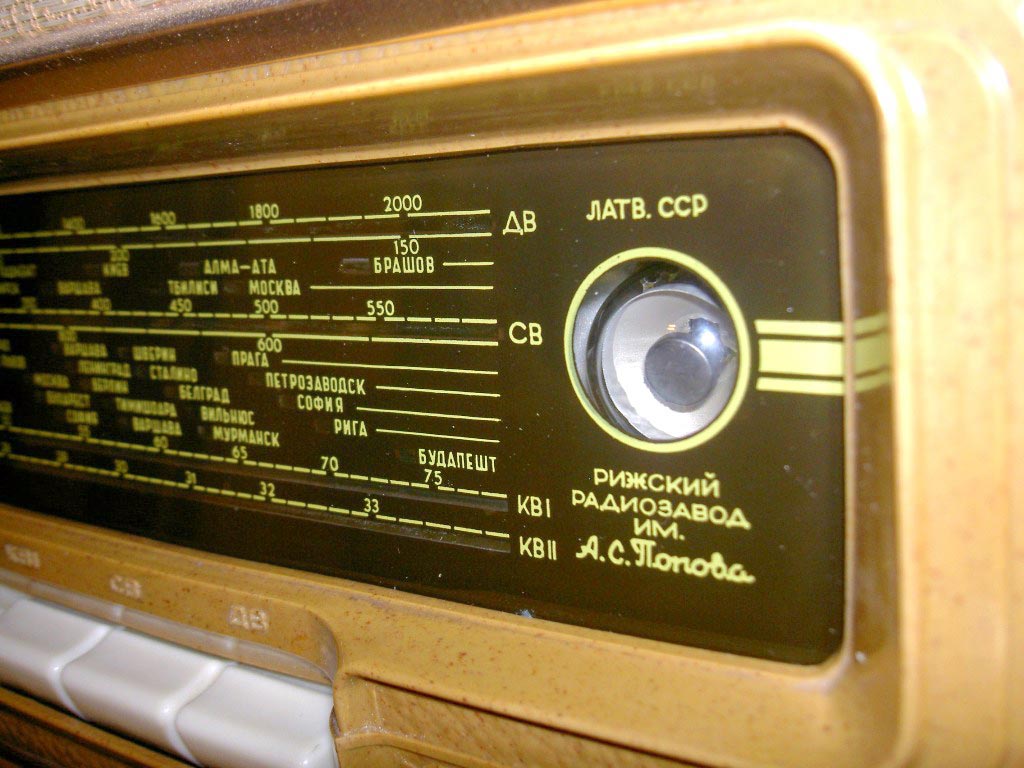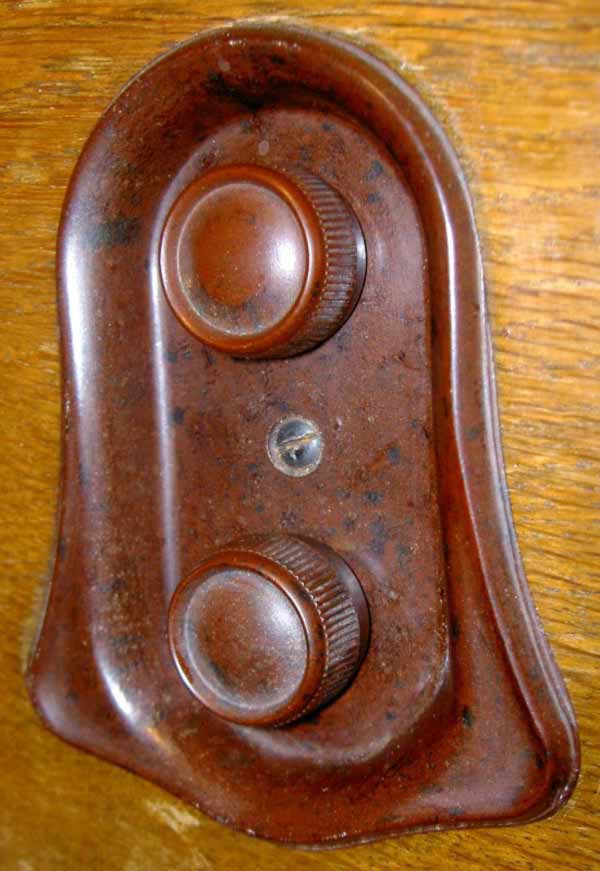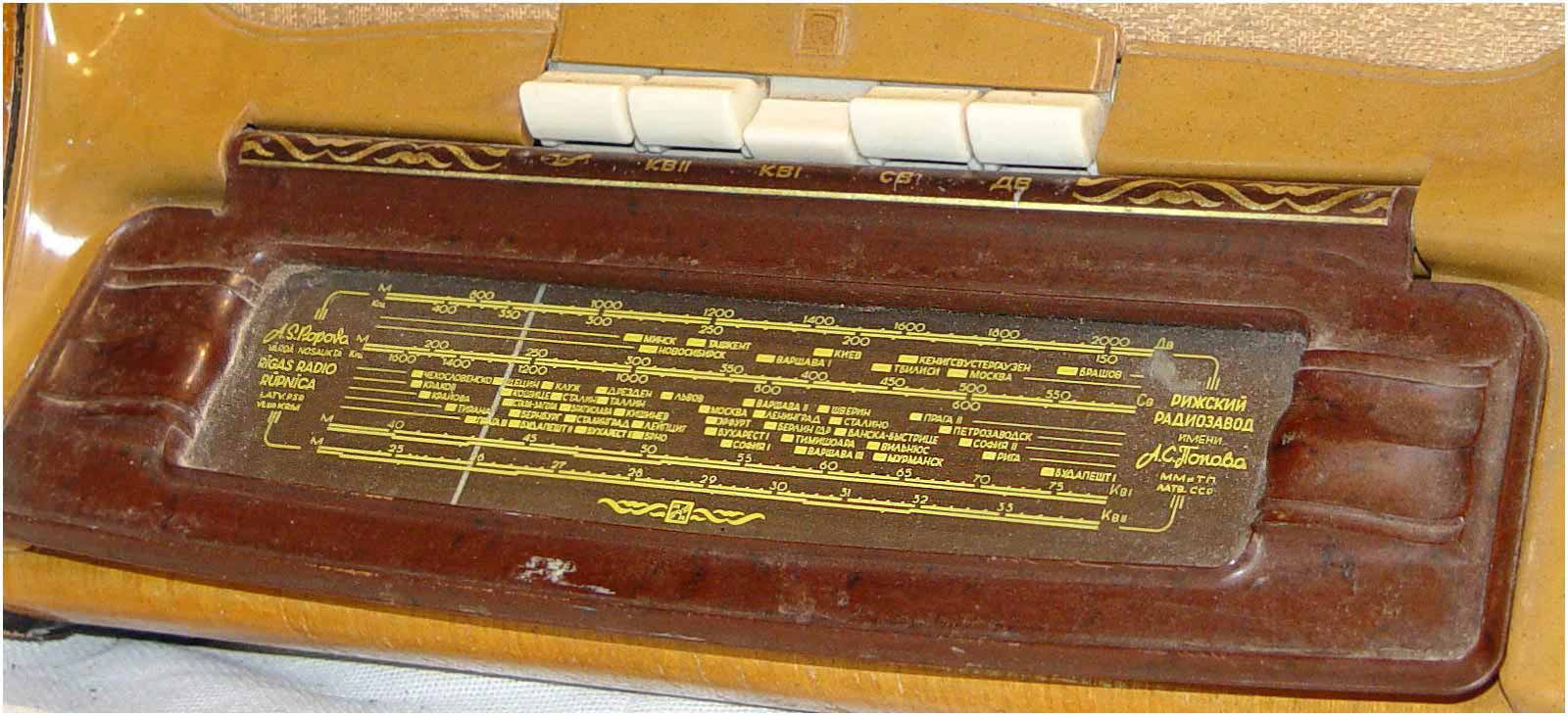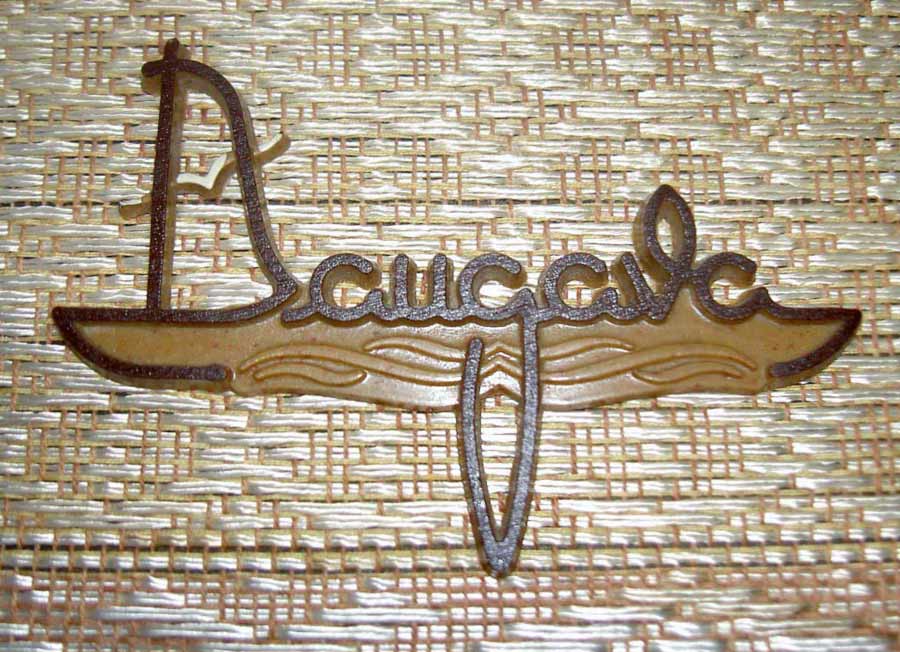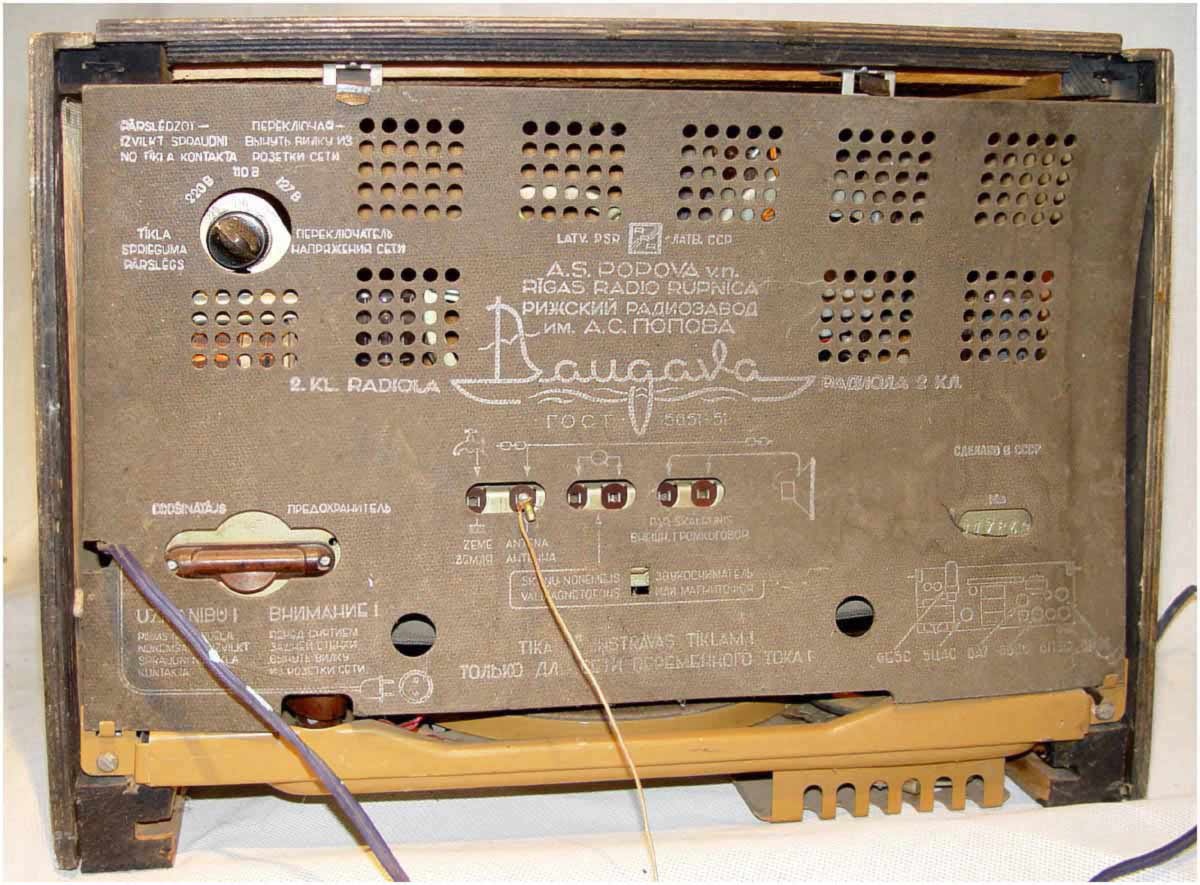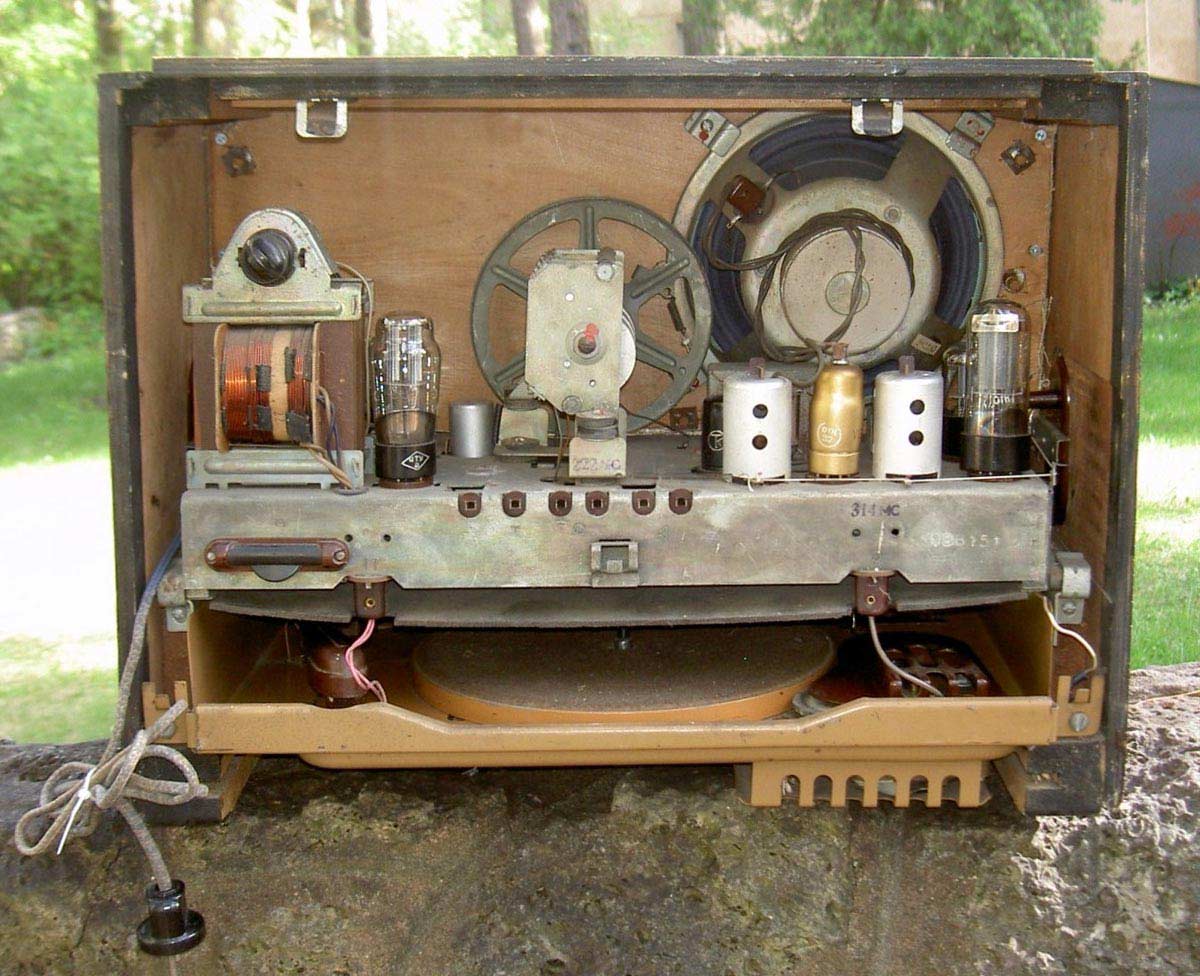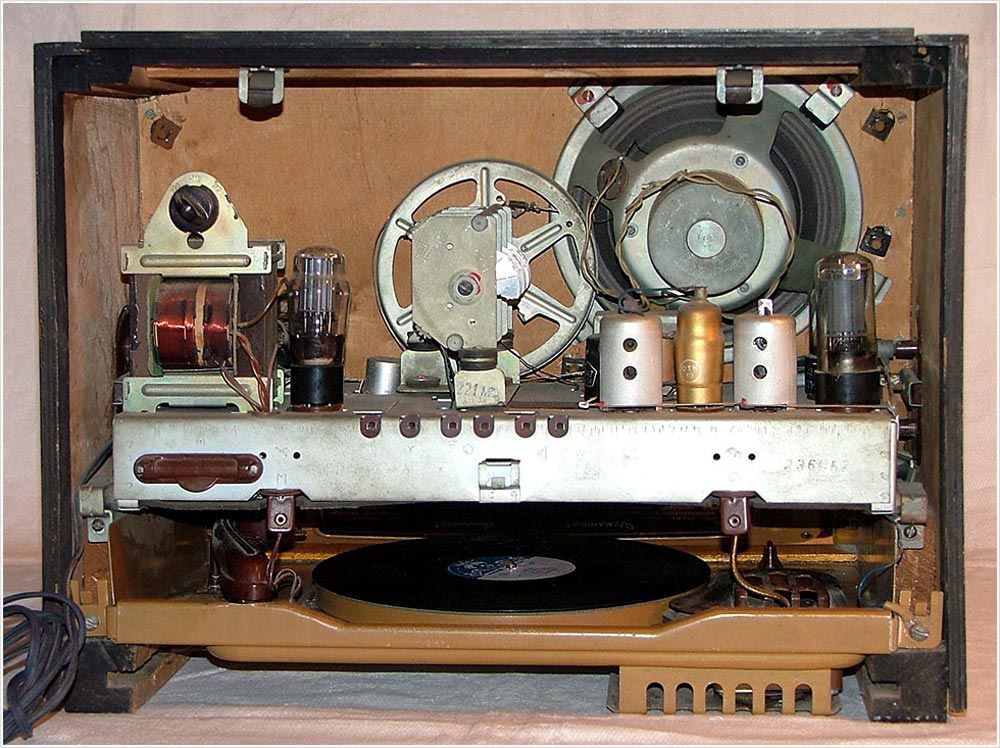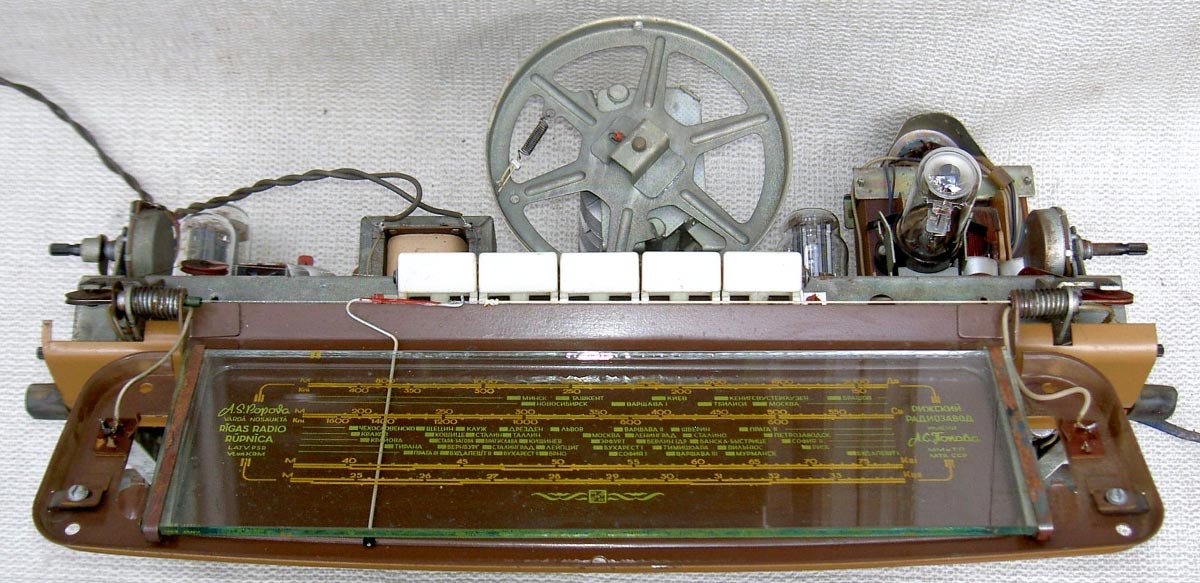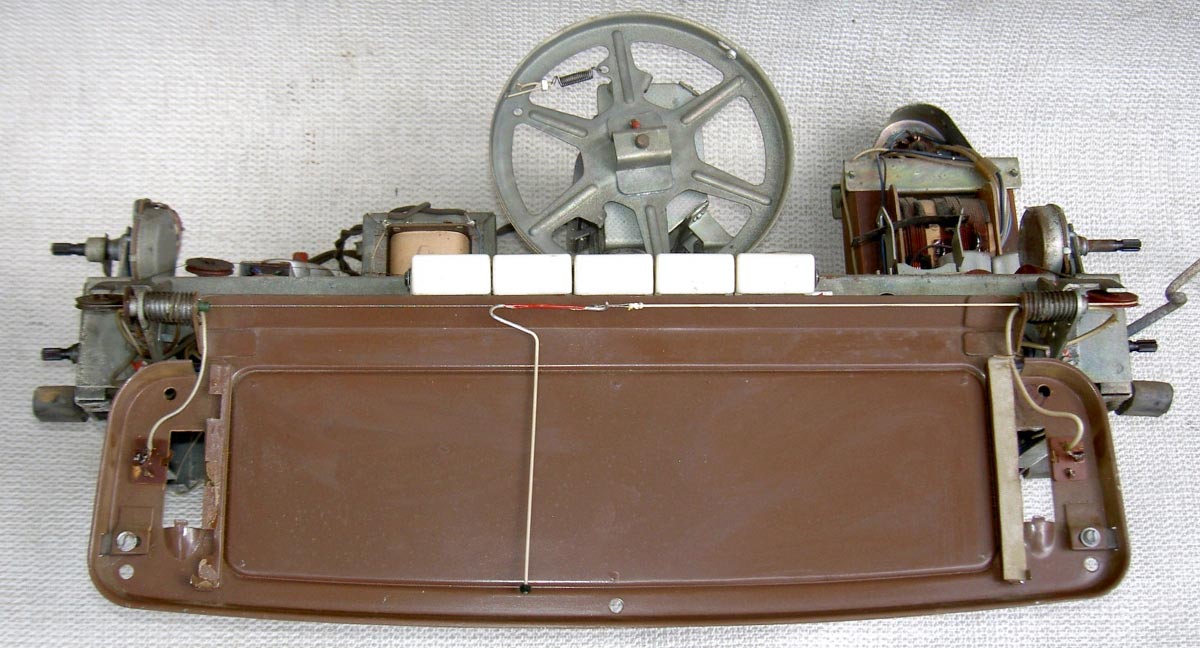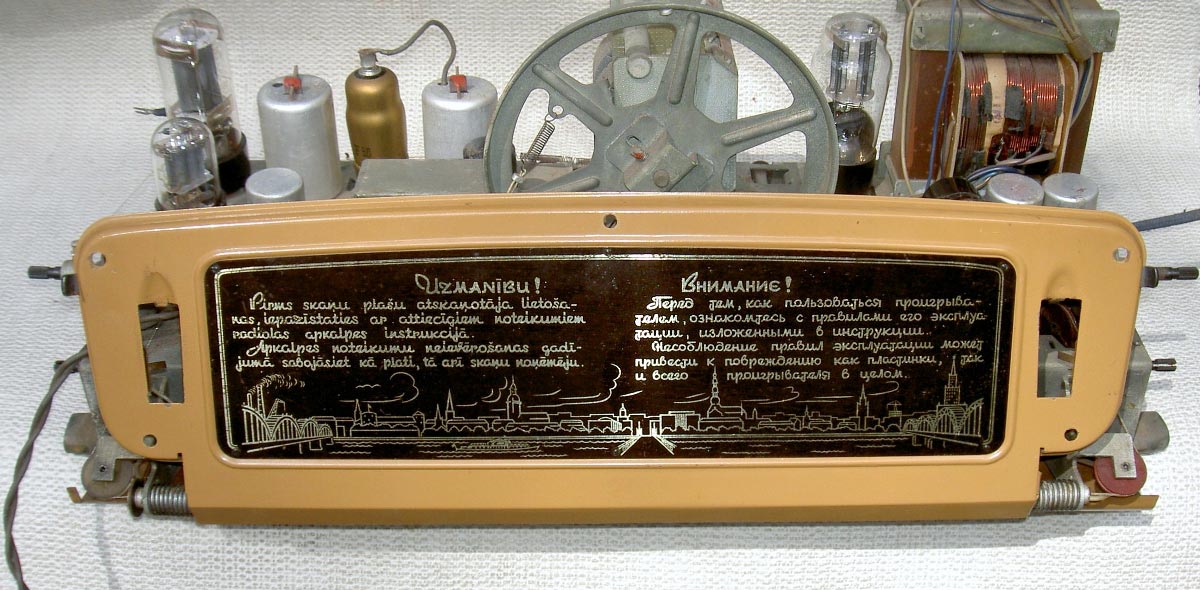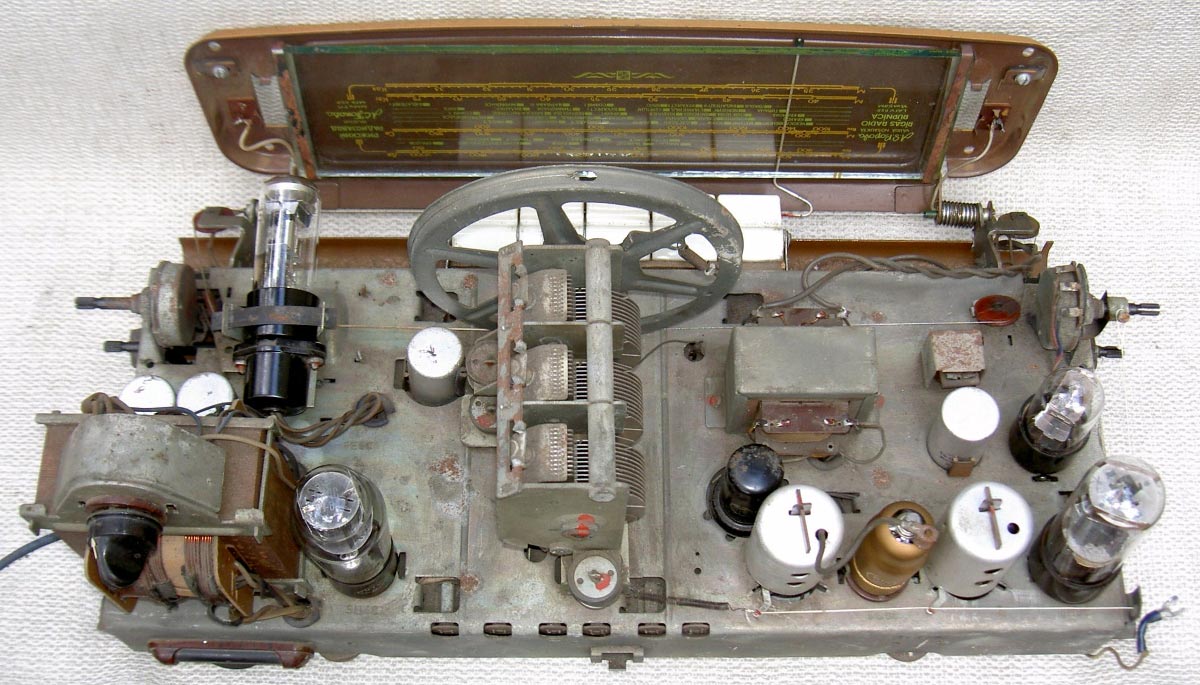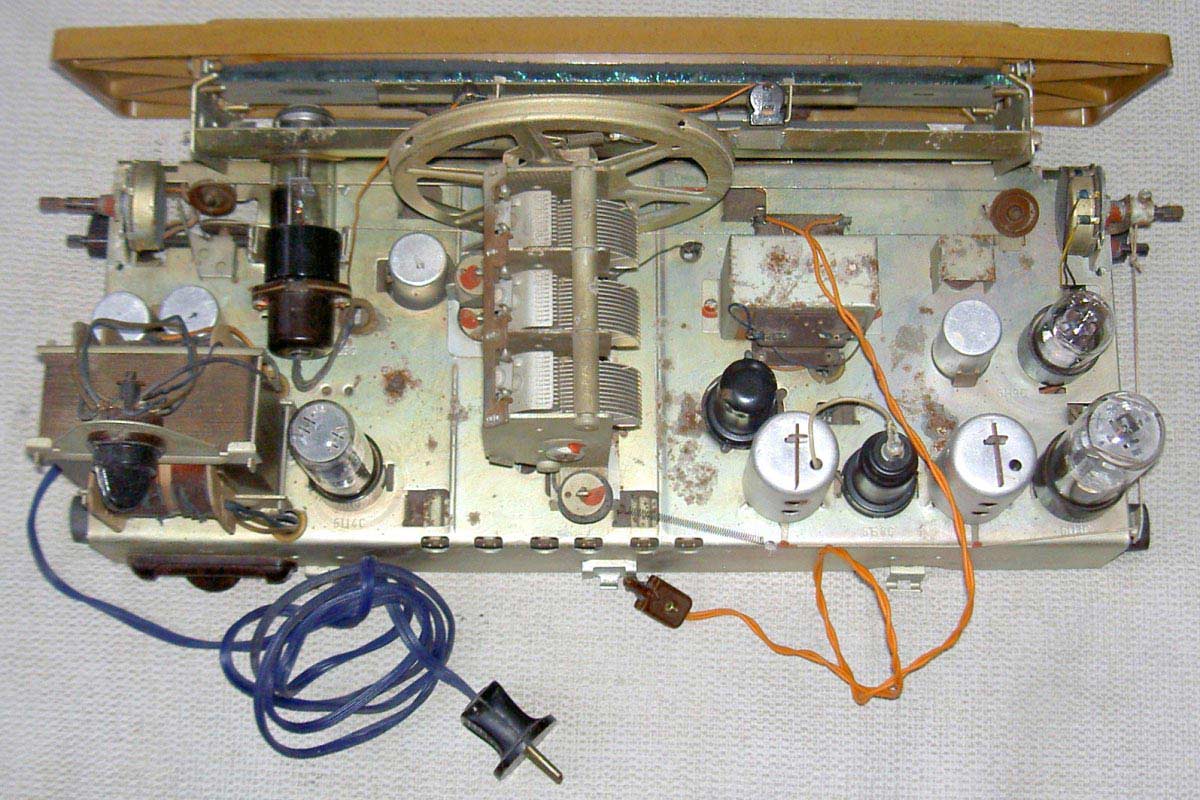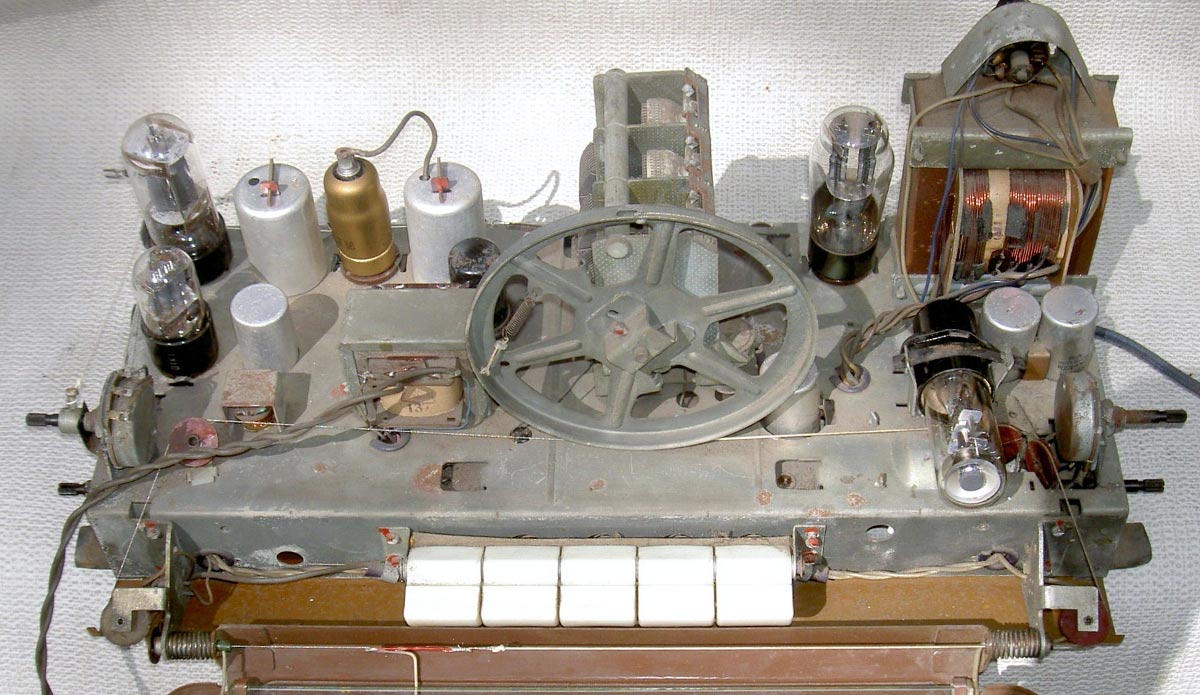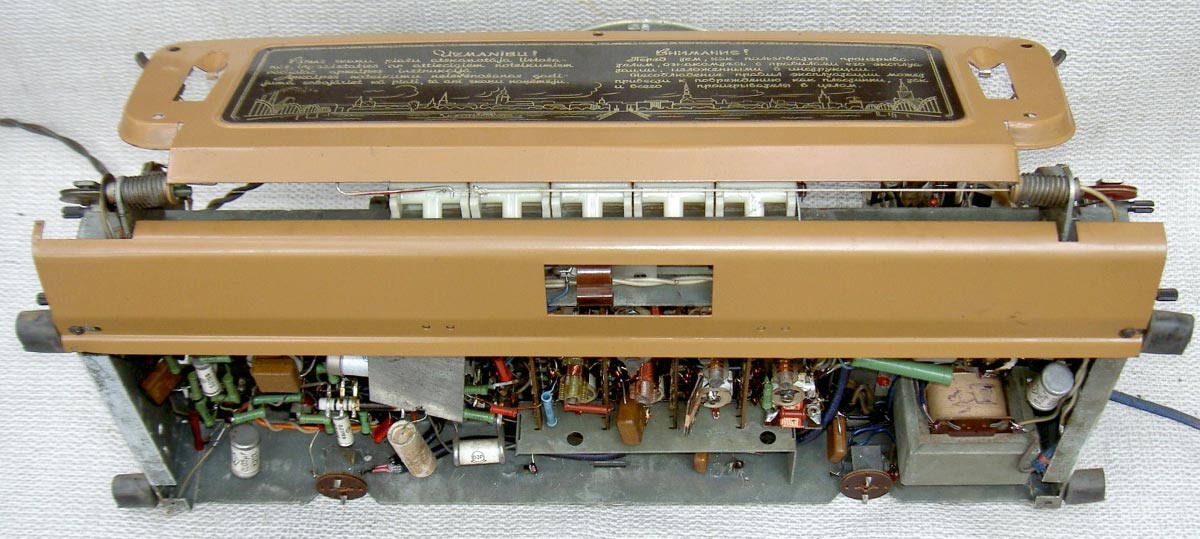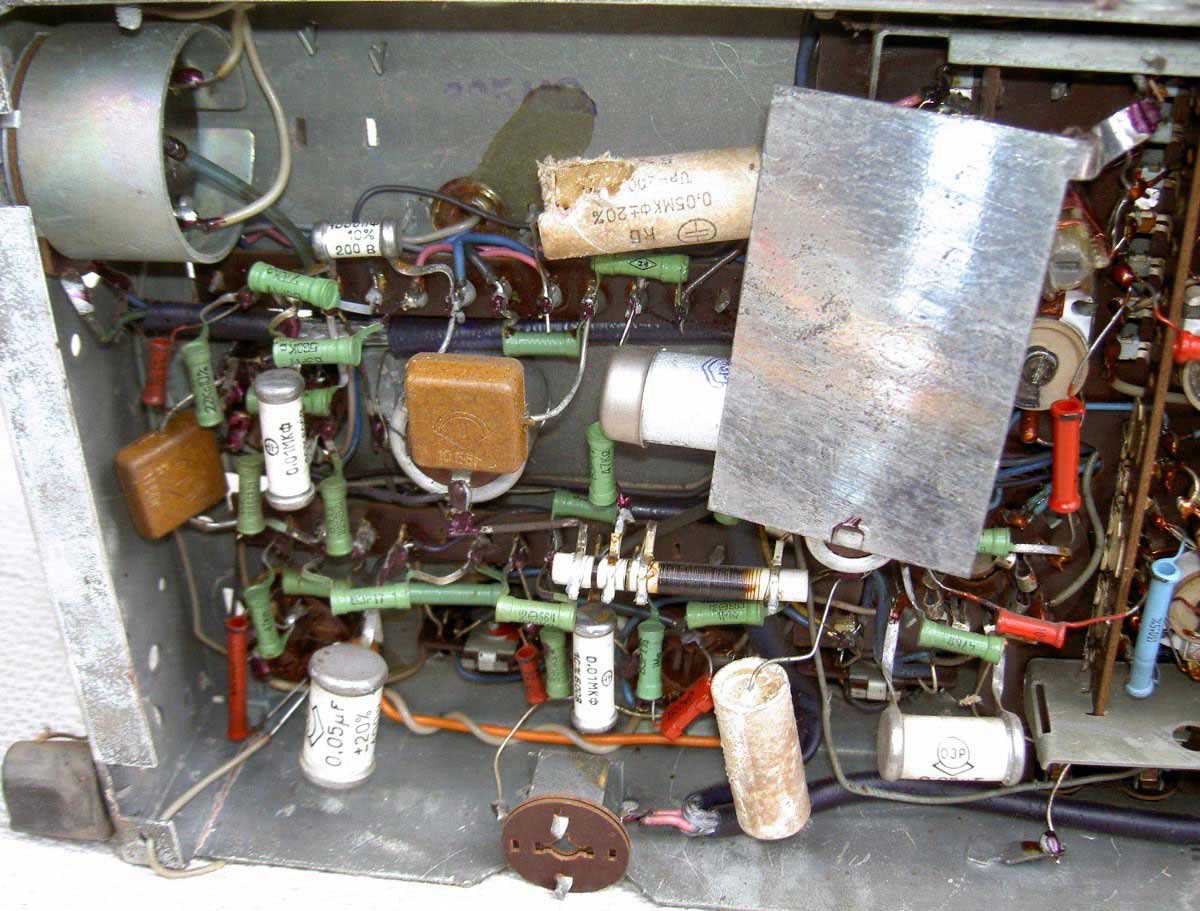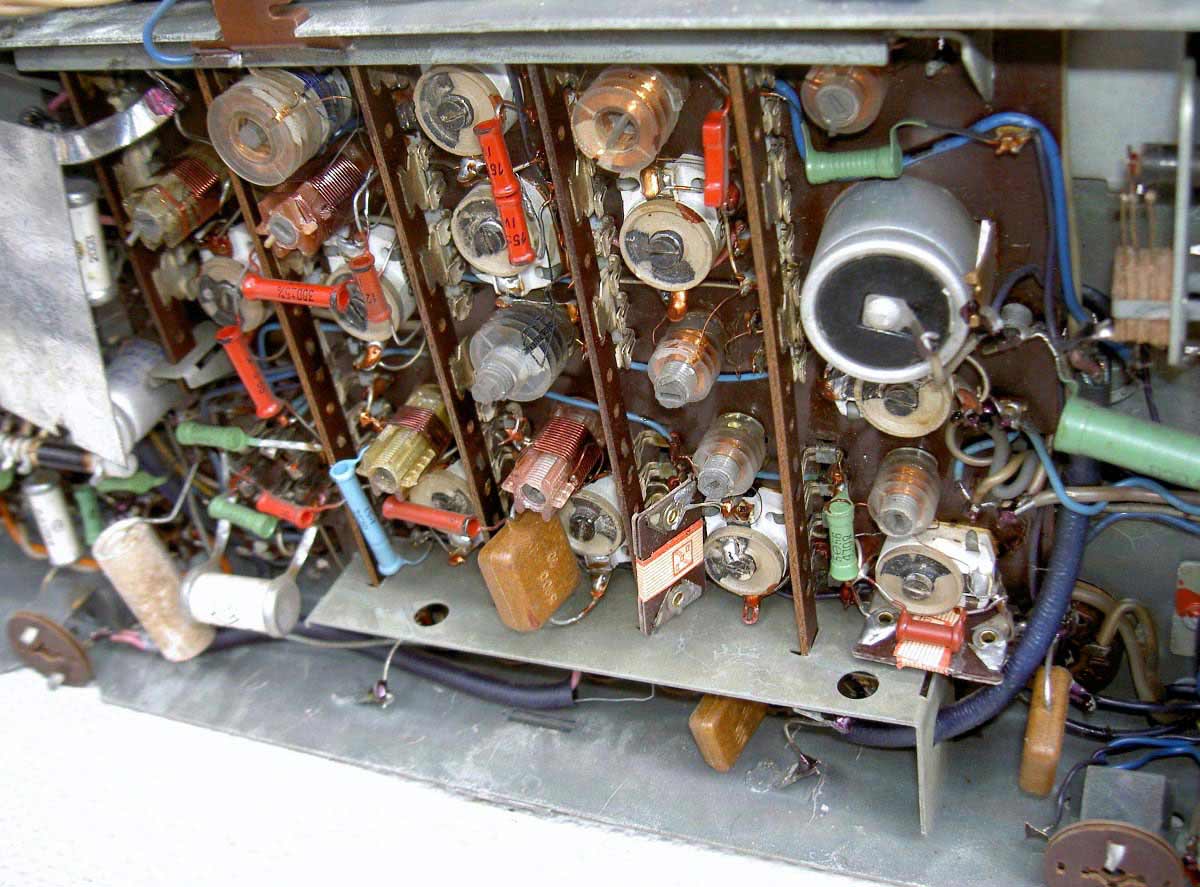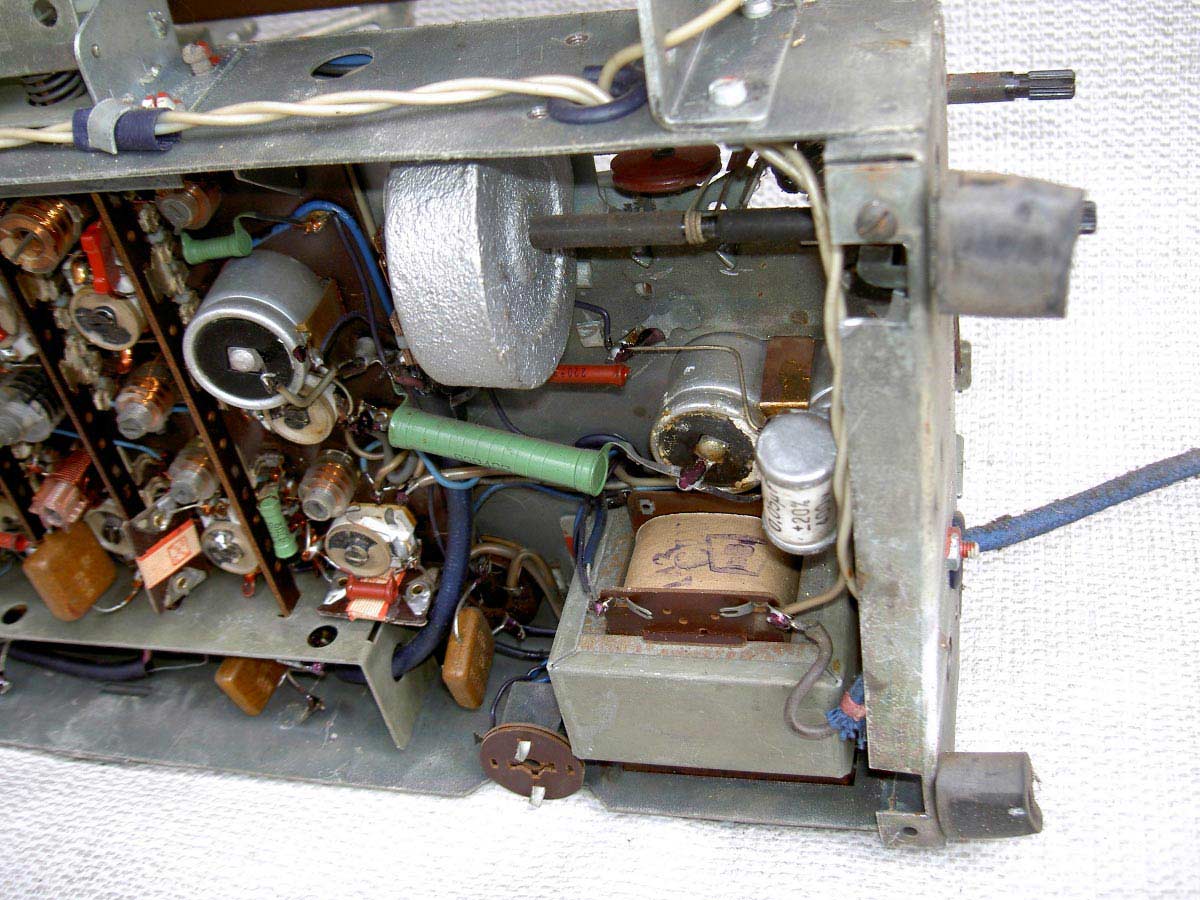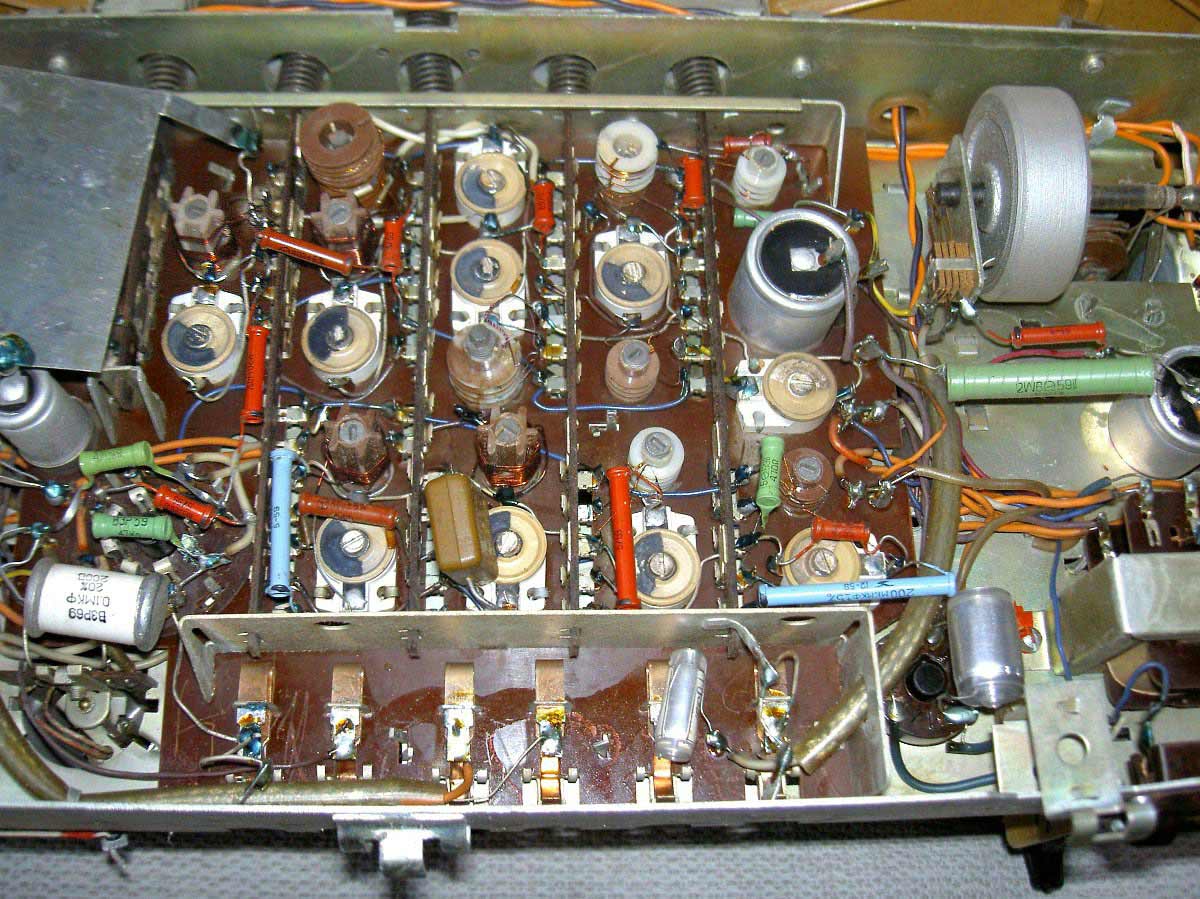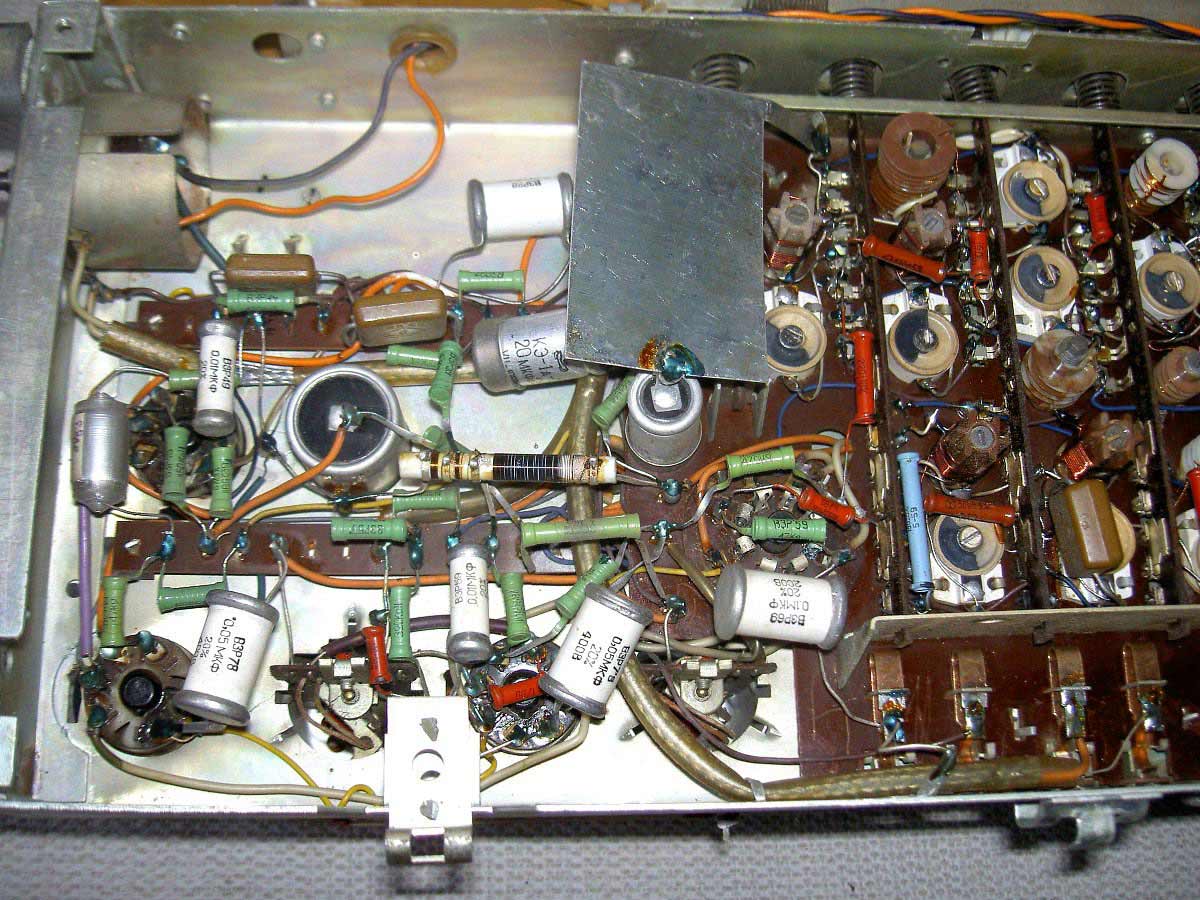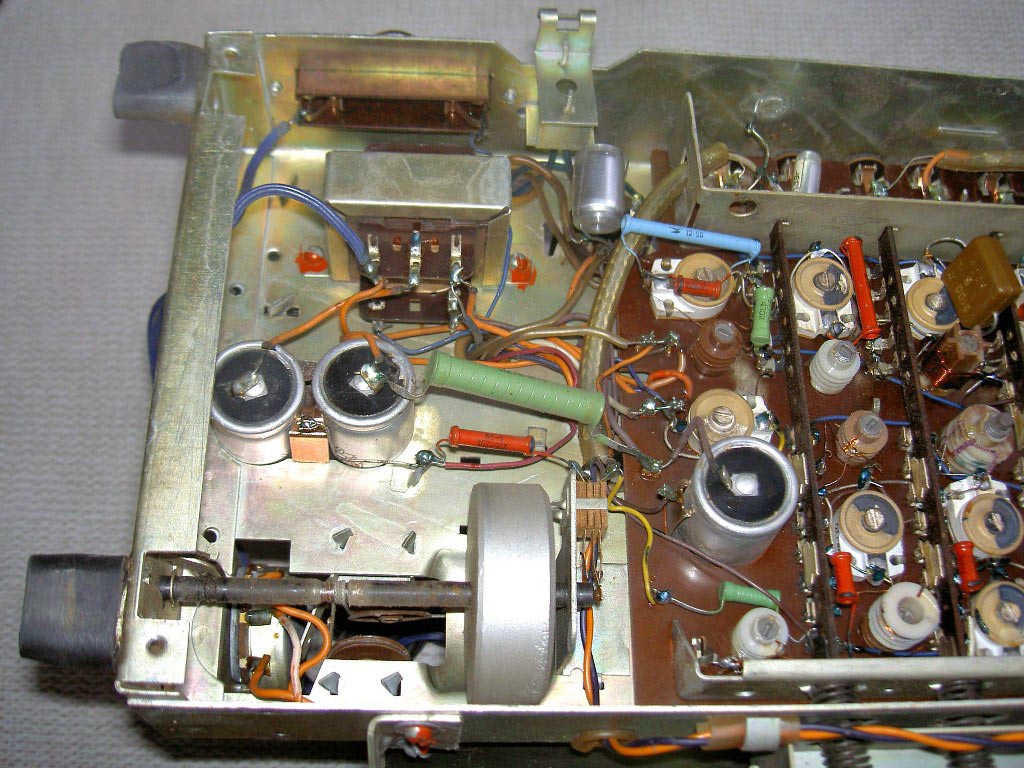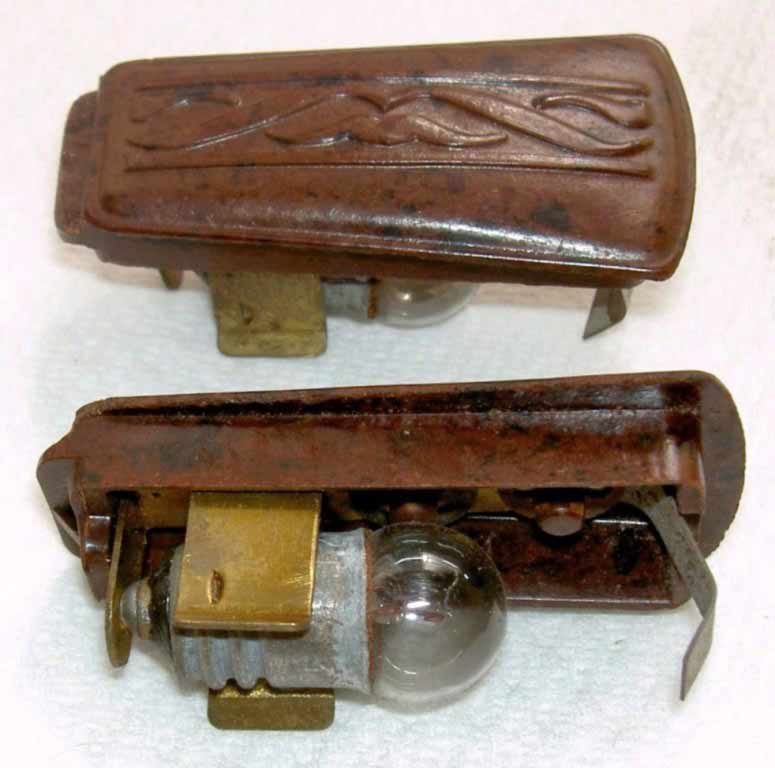Radiola network lamp `` Daugava ''.
Network tube radiosDomesticRadiola network lamp "Daugava" since 1954 was produced at the Riga plant. A.S. Popov. The first releases of the radio were referred to as "Santa". Radiola was named after the main river of Latvia. It consists of a 6-tube superheterodyne receiver of the 2nd class, combined with a universal player designed for playing regular and LP records up to 30 cm in diameter. The receiver has LW, MW bands and 2 HF sub-bands. The control knobs are located in the niches on the side walls. The scale at the radio is horizontal, with a slight slope, glass. On it, in addition to the divisions indicating the frequency, the names of DV, SV radio stations are marked. The EPU uses an electromagnetic pickup and an asynchronous motor with a gearshift mechanism. Radiola is assembled in a wooden case, with imitation of valuable species. The dimensions of the radio are 550x40x320 mm, its weight is 21 kg. Since the beginning of 1955, several factories in the USSR have begun to produce the Aurora, Irtysh and Iset radio radios, made in the absolute likeness of the Daugava radio.